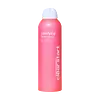What's inside
What's inside
 Key Ingredients
Key Ingredients

 Benefits
Benefits

 Concerns
Concerns

 Ingredients Side-by-side
Ingredients Side-by-side

Salicylic Acid 0.5%
MaskingWater
Skin ConditioningAlcohol
AntimicrobialButylene Glycol
HumectantPEG-40 Hydrogenated Castor Oil
EmulsifyingNiacinamide
SmoothingAllantoin
Skin ConditioningGlycerin
HumectantNymphaea Caerulea Flower Extract
Skin ConditioningPanthenol
Skin ConditioningGlycolic Acid
BufferingMenthol
MaskingTocopheryl Acetate
AntioxidantSodium Hydroxide
BufferingCocamidopropyl Betaine
CleansingT-Butyl Alcohol
PerfumingCitral
PerfumingGeraniol
PerfumingParfum
MaskingWater
Skin ConditioningHamamelis Virginiana Water
AstringentIsoceteth-20
EmulsifyingEthoxydiglycol
HumectantHexylene Glycol
EmulsifyingMelaleuca Alternifolia Leaf Oil
AntioxidantCitrus Aurantium Dulcis Peel Oil
MaskingLavandula Angustifolia Oil
MaskingCitrus Limon Peel Oil
MaskingCymbopogon Schoenanthus Oil
MaskingArgania Spinosa Kernel Oil
EmollientCitrus Reticulata Leaf Oil
MaskingCamellia Sinensis Leaf Extract
AntimicrobialGlycyrrhiza Glabra Root Extract
BleachingPorphyra Umbilicalis Extract
Skin ConditioningSerenoa Serrulata Fruit Extract
Skin ConditioningSesamum Indicum Seed Oil
EmollientButylene Glycol
HumectantTocopherol
AntioxidantBeta-Sitosterol
Emulsion StabilisingEthylhexylglycerin
Skin ConditioningPolysorbate 20
EmulsifyingSodium Hydroxide
BufferingDisodium EDTA
Phenoxyethanol
PreservativeBenzoic Acid
MaskingLimonene
PerfumingLinalool
PerfumingCitral
PerfumingGeraniol
PerfumingCitronellol
PerfumingCoumarin
PerfumingWater, Hamamelis Virginiana Water, Isoceteth-20, Ethoxydiglycol, Hexylene Glycol, Melaleuca Alternifolia Leaf Oil, Citrus Aurantium Dulcis Peel Oil, Lavandula Angustifolia Oil, Citrus Limon Peel Oil, Cymbopogon Schoenanthus Oil, Argania Spinosa Kernel Oil, Citrus Reticulata Leaf Oil, Camellia Sinensis Leaf Extract, Glycyrrhiza Glabra Root Extract, Porphyra Umbilicalis Extract, Serenoa Serrulata Fruit Extract, Sesamum Indicum Seed Oil, Butylene Glycol, Tocopherol, Beta-Sitosterol, Ethylhexylglycerin, Polysorbate 20, Sodium Hydroxide, Disodium EDTA, Phenoxyethanol, Benzoic Acid, Limonene, Linalool, Citral, Geraniol, Citronellol, Coumarin
Ingredients Explained
These ingredients are found in both products.
Ingredients higher up in an ingredient list are typically present in a larger amount.
Butylene Glycol (or BG) is used within cosmetic products for a few different reasons:
Overall, Butylene Glycol is a safe and well-rounded ingredient that works well with other ingredients.
Though this ingredient works well with most skin types, some people with sensitive skin may experience a reaction such as allergic rashes, closed comedones, or itchiness.
Learn more about Butylene GlycolCitral is a fragrance and used to add a lemon-like scent to products. It is both naturally found in plants and created synthetically. In plants, it is commonly occurring in lemon myrtle, lemongrass, lemon tea-tree, lemon verbena, and other citruses.
The EU mandates Citral be listed separately as a fragrance. It is a known allergen and may cause contact dermatitis. Citral can also used as a masking ingredient.
The term 'fragrance' is not regulated in many countries. In many cases, it is up to the brand to define this term. For instance, many brands choose to label themselves as "fragrance-free" because they are not using synthetic fragrances. However, their products may still contain ingredients such as essential oils that are considered a fragrance.
The term 'citral' is a collective term for two geometric isomers: geranial/Citral A and neral/Citral B.
Learn more about CitralGeraniol is used to add fragrance/parfum to a product. It is the main component of citronellol. It is a monoterpenoid and an alcohol.
Monoterpenes are naturally found in many parts of different plants.
Geraniol can be found in many essential oils including Rose Oil and Citronella Oil. The scent of Geraniol is often described as "rose-like". Many foods also contain Geraniol for fruit flavoring.
Geraniol can irritate the skin when exposed to air. However, irritation depends on the ability of geraniol to penetrate into the skin. In general, geraniol is not able to penetrate skin easily.
Geraniol is colorless and has low water-solubility. However, it is soluble in common organic solvents.
Like citronellol, it is a natural insect repellent.
2,6-Octadien-1-ol, 3,7-dimethyl-, (2E)-
Learn more about GeraniolSodium Hydroxide is also known as lye or caustic soda. It is used to adjust the pH of products; many ingredients require a specific pH to be effective.
In small amounts, sodium hydroxide is considered safe to use. However, large amounts may cause chemical burns due to its high alkaline.
Your skin has a natural pH and acid mantle. This acid mantle helps prevent harmful bacteria from breaking through. The acid mantle also helps keep your skin hydrated.
"Alkaline" refers to a high pH level. A low pH level would be considered acidic.
Learn more about Sodium HydroxideWater. It's the most common cosmetic ingredient of all. You'll usually see it at the top of ingredient lists, meaning that it makes up the largest part of the product.
So why is it so popular? Water most often acts as a solvent - this means that it helps dissolve other ingredients into the formulation.
You'll also recognize water as that liquid we all need to stay alive. If you see this, drink a glass of water. Stay hydrated!
Learn more about Water